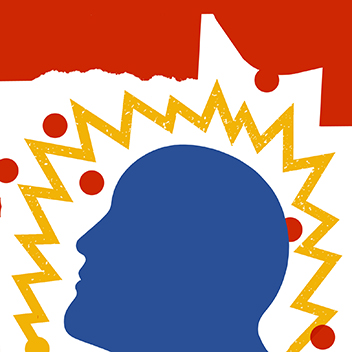
At my lab, we build artificial societies on computers. When the “people” in our models interact, they can spread disease, rumors and fear. I developed a next-generation software person, Agent Zero, who has a fear module, a deliberative module and a social module. Agent Zero’s overt behavior is the result of all three forces.
Hume said, “Reason is a slave to the passions.” It’s certainly true for fear. The amygdala complex in the brain is as old as vertebrate history; we’re hard-wired to learn fears and stay afraid. It’s a survival component, but it is double-edged: we can also acquire and spread baseless fears and biases. If we had a better appreciation of this, it would help us avoid being manipulated politically.
In terms of pure public health, though, fear can be good. By inducing self-isolation, fear helps suppress the disease. The problem arises when people prematurely get over their fear and come out of isolation. This pours fuel—in the form of susceptible, healthy people—onto the infective embers that are still out there, causing a second wave. That’s exactly what we saw in the flu pandemic of 1918. And it’s exactly what we worry about now.
Fear of vaccine also worries me a great deal. We have a new model that accounts for it. When people are more afraid of the disease than they are of the vaccine, they take the vaccine. That suppresses the disease until people are no longer afraid. At that point, they stop taking the vaccine, and the disease roars back. You see these cycles of vigilance and complacency in the history of epidemics. That, too, could happen with COVID.
What’s the appropriate level of fear? It’s hard to know when we’re not doing enough testing. We don’t know how deadly this virus is, per case, because we don’t know the total number of cases. And while a great deal of modeling and public debate has focused on the peak, it’s worth noting that in most epidemics, about half the spread happens after the peak. I think states are opening up in a perilous and disorganized way. As far as I’m concerned, we’re still deep in the woods. The right way to put people back to work is to find out who’s immune. We need to be antibody-testing many millions of people, and we aren’t close.
My dad, Joe Epstein, was a professor of philosophy at Amherst. I wonder what he’d make of this situation. I’ve been very afraid for the first responders. But I haven’t felt terribly afraid personally: I’m hunkered down with my family; we have our face coverings and we’re isolated. The fate of our democracy—that’s much scarier to me than the disease. I think he’d agree.
Joshua Epstein ’76, H’10, P’17, professor of epidemiology, New York University School of Global Public Health; director, NYU’s Agent-Based Modeling Laboratory; author of Agent_Zero: Toward Neurocognitive Foundations for Generative Social Science